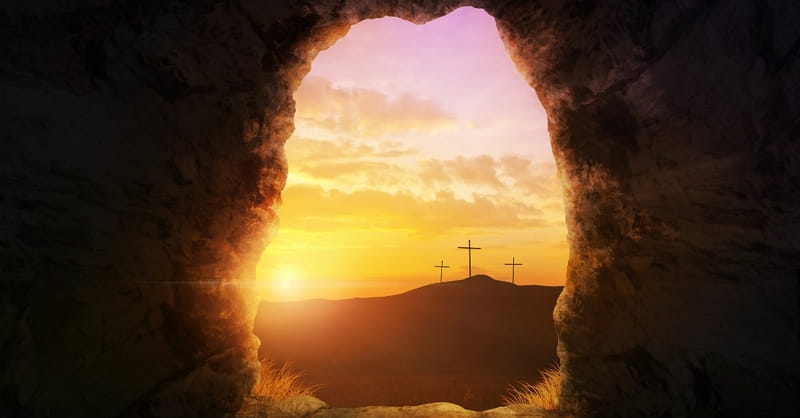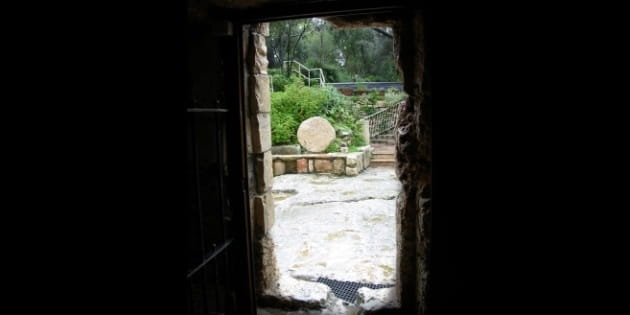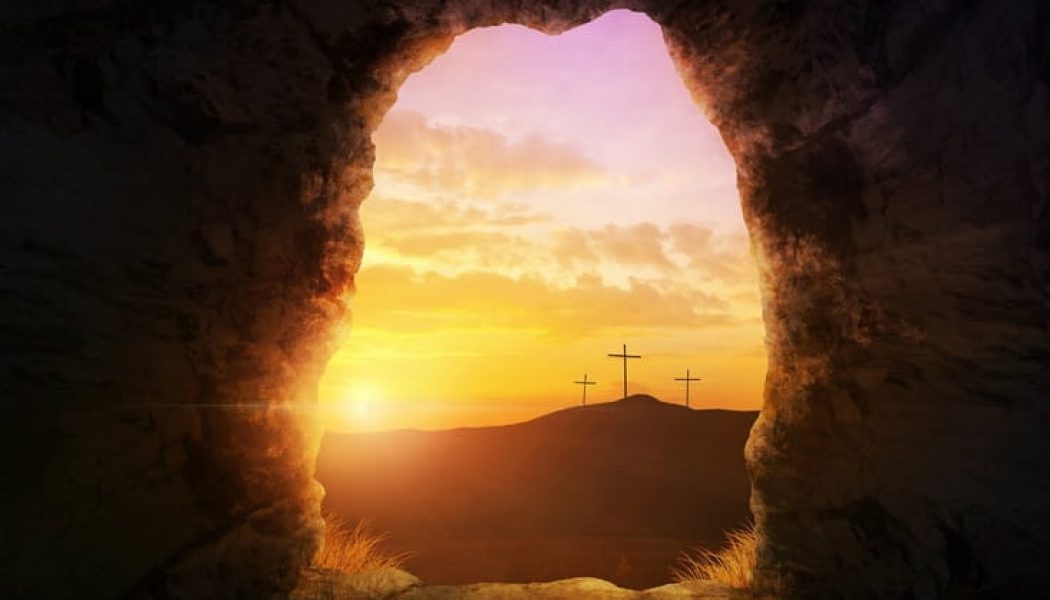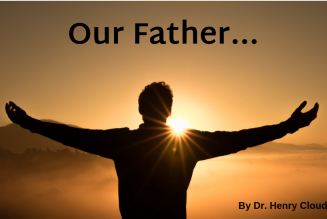
In the late 1990s, a group of scholars assembled to evaluate whether Jesus actually said the things attributed to him by the Gospel writers. Although they employed remarkably subjective criteria in their evaluation of Scripture, members of the self-appointed “Jesus Seminar” were widely quoted by the media as authorities on the Christian faith.
Marcus Borg, a Jesus Seminar leader, said this of Christ’s resurrection: “As a child, I took it for granted that Easter meant that Jesus literally rose from the dead. I now see Easter very differently. For me, it is irrelevant whether or not the tomb was empty. Whether Easter involved something remarkable happening to the physical body of Jesus is irrelevant.”1
As a child, Borg was right. As an adult—though considered a spokesman for Christianity—he couldn’t be more wrong. What Borg calls irrelevant—the physical resurrection of Christ’s body—the apostle Paul considered absolutely essential to the Christian faith. Paul wrote to the Corinthians, “If Christ has not been raised, your faith is futile; you are still in your sins… [and] we are to be pitied more than all men” (1 Corinthians 15:17-19).
The physical resurrection of Jesus Christ is the cornerstone of redemption—both for mankind and for the earth. Indeed, without Christ’s resurrection and what it means—an eternal future for fully restored human beings dwelling on a fully restored Earth—there is no Christianity.
Resurrection Is Physical
The major Christian creeds state, “I believe in the resurrection of the body.” But I have found in many conversations that Christians tend to spiritualize the resurrection of the dead, effectively denying it.† They don’t reject it as a doctrine, but they deny its essential meaning: a permanent return to a physical existence in a physical universe.
Of Americans who believe in a resurrection of the dead, two-thirds believe they will not have bodies after the resurrection.2 But this is self-contradictory. A non-physical resurrection is like a sunless sunrise. There’s no such thing. Resurrection means that we will have bodies. If we didn’t have bodies, we wouldn’t be resurrected!
The biblical doctrine of the resurrection of the dead begins with the human body but extends far beyond it. R. A. Torrey writes, “We will not be disembodied spirits in the world to come, but redeemed spirits, in redeemed bodies, in a redeemed universe.”3 If we don’t get it right on the resurrection of the body, we’ll get nothing else right. It’s therefore critical that we not merely affirm the resurrection of the dead as a point of doctrine but that we understand the meaning of the resurrection we affirm.
Genesis 2:7 says, “The Lord God formed the man from the dust of the ground and breathed into his nostrils the breath of life, and the man became a living being.” The Hebrew word for “living being” is nephesh, often translated “soul.” The point at which Adam became nephesh is when God joined his body (dust) and spirit (breath) together. Adam was not a living human being until he had both material (physical) and immaterial (spiritual) components. Thus, the essence of humanity is not just spirit, but spirit joined with body. Your body does not merely house the real you—it is as much a part of who you are as your spirit is.
If this idea seems wrong to us, it’s because we have been deeply influenced by Christoplatonism.†† From a christoplatonic perspective, our souls merely occupy our bodies, like a hermit crab inhabits a seashell, and our souls could naturally—or even ideally—live in a disembodied state.
It’s no coincidence that the apostle Paul’s detailed defense of the physical resurrection of the dead was written to the church at Corinth. More than any other New Testament Christians, the Corinthian believers were immersed in the Greek philosophies of Platonism and dualism, which perceived a dichotomy between the spiritual and the physical. The biblical view of human nature, however, is radically different. Scripture indicates that God designed our bodies to be an integral part of our total being. Our physical bodies are an essential aspect of who we are, not just shells for our spirits to inhabit.
Death is an abnormal condition because it tears apart what God created and joined together. God intended for our bodies to last as long as our souls. Those who believe in Platonism or in preexistent spirits see a disembodied soul as natural and even desirable. The Bible sees it as unnatural and undesirable. We are unified beings. That’s why the bodily resurrection of the dead is so vital. And that’s why Job rejoiced that in his flesh he would see God (Job 19:26).
When God sent Jesus to die, it was for our bodies as well as our spirits. He came to redeem not just “the breath of life” (spirit) but also “the dust of the ground” (body). When we die, it isn’t that our real self goes to the intermediate Heaven and our fake self goes to the grave; it’s that part of us goes to the intermediate Heaven and part goes to the grave to await our bodily resurrection. We will never be all that God intended for us to be until body and spirit are again joined in resurrection. (If we do have physical forms in the intermediate state, clearly they will not be our original or ultimate bodies.)
Any views of the afterlife that settle for less than a bodily resurrection—including Christoplatonism, reincarnation, and transmigration of the soul—are explicitly unchristian. The early church waged major doctrinal wars against Gnosticism and Manichaeism, dualistic worldviews that associated God with the spiritual realm of light and Satan with the physical world of darkness. These heresies contradicted the biblical account that says God was pleased with the entire physical realm, all of which he created and called “very good” (Genesis 1:31). The truth of Christ’s resurrection repudiated the philosophies of Gnosticism and Manichaeism. Nevertheless, two thousand years later, these persistent heresies have managed to take hostage our modern theology of Heaven.
Our incorrect thinking about bodily resurrection stems from our failure to understand the environment in which resurrected people will live—the New Earth. Anthony Hoekema is right: “Resurrected bodies are not intended just to float in space, or to flit from cloud to cloud. They call for a new earth on which to live and to work, glorifying God. The doctrine of the resurrection of the body, in fact, makes no sense whatever apart from the doctrine of the new earth.”4
Continuity Is Critical
Paul says that if Christ didn’t rise from the dead, we’re still in our sins (1 Corinthians 15:17)—meaning we’d be bound for Hell, not Heaven.
Paul doesn’t just say that if there’s no Heaven, the Christian life is futile. He says that if there’s no resurrection of the dead, then the hope of Christianity is an illusion, and we’re to be pitied for placing our faith in Christ. Paul has no interest in a Heaven that’s merely for human spirits. Ultimately, there is no Heaven for human spirits unless Heaven is also for human bodies.
Wishful thinking is not the reason why, deep in our hearts, we desire a resurrected life on a resurrected Earth instead of a disembodied existence in a spiritual realm. Rather, it is precisely because God intends for us to be raised to new life on the New Earth that we desire it. It is God who created us to desire what we are made for. It is God who “set eternity in the hearts of men” (Ecclesiastes 3:11). It is God who designed us to live on Earth and to desire the earthly life. And it is our bodily resurrection that will allow us to return to an earthly life—this time freed from sin and the Curse.
That’s God’s idea, not ours. Our desires simply correspond to God’s intentions, because he implanted his intentions into us in the form of our desires.
“Therefore, if anyone is in Christ, he is a new creation; the old has gone, the new has come!” (2 Corinthians 5:17). Becoming a new creation sounds as if it involves a radical change, and indeed it does. But though we become new people when we come to Christ, we still remain the same people.
When I came to Christ as a high school student, I became a new person, yet I was still the same person I’d always been. My mother saw a lot of changes, but she still recognized me. She still said, “Good morning, Randy,” not “Who are you?” I was still Randy Alcorn, though a substantially transformed Randy Alcorn. This same Randy will undergo another change at death, and yet another change at the resurrection of the dead. But through all the changes I will still be who I was and who I am. There will be continuity from this life to the next. I will be able to say with Job, “In my flesh I will see God; I myself will see him with my own eyes—I, and not another” (Job 19:26-27).
Conversion does not mean eliminating the old but transforming it. Despite the radical changes that occur through salvation, death, and resurrection, we remain who we are. We have the same history, appearance, memory, interests, and skills. This is the principle of redemptive continuity. God will not scrap his original creation and start over. Instead, he will take his fallen, corrupted children and restore, refresh, and renew us to our original design.
Theologian Herman Bavinck, writing in the early twentieth century, argued that a parallel continuity exists between the old and New Earth: “God’s honor consists precisely in the fact that he redeems and renews the same humanity, the same world, the same Heaven, and the same earth that have been corrupted and polluted by sin. Just as anyone in Christ is a new creation in whom the old has passed away and everything has become new (2 Corinthians 5:17), so this world passes away in its present form as well, in order out of its womb, at God’s word of power, to give birth and being to a new world.”5
The New Earth will still be Earth, but a changed Earth. It will be converted and resurrected, but it will still be Earth and recognizable as such. Just as those reborn through salvation maintain continuity with the people they were, so too the world will be reborn in continuity with the old world (Matthew 19:28). In fact, writes Bavinck, “the rebirth of humans is completed in the rebirth of creation. The kingdom of God is fully realized only when it is visibly extended over the earth as well.”6
If we don’t grasp redemptive continuity, we cannot understand the nature of our resurrection. “There must be continuity,” writes Anthony Hoekema, “for otherwise there would be little point in speaking about a resurrection at all. The calling into existence of a completely new set of people totally different from the present inhabitants of the earth would not be a resurrection.”7
Continuity is evident in passages that discuss resurrection, including 1 Corinthians 15:53: “For the perishable must clothe itself with the imperishable, and the mortal with immortality.” It is this (the perishable and mortal) which puts on that (the imperishable and immortal). Likewise, it is we, the very same people who walk this earth, who will walk the New Earth. “And so we will be with the Lord forever” (1 Thessalonians 4:17, emphasis added).
Pointing out that God says he is, not was, the God of the patriarchs, Christ says to those denying the resurrection of the dead, “He is not the God of the dead but of the living” (Matthew 22:32).
The Nature of Our New Bodies
The empty tomb is the ultimate proof that Christ’s resurrection body was the same body that died on the cross. If resurrection meant the creation of a new body, Christ’s original body would have remained in the tomb. When Jesus said to his disciples after his resurrection, “It is I myself,” he was emphasizing to them that he was the same person—in spirit and body—who had gone to the cross (Luke 24:39). His disciples saw the marks of his crucifixion, unmistakable evidence that this was the same body.
Jesus said, “Destroy this temple, and I will raise it again in three days” (John 2:19). John clarifies that “the temple he had spoken of was his body” (John 2:21). The body that rose is the body that was destroyed. Hence, Hank Hanegraaff says, “There is a one-to-one correspondence between the body of Christ that died and the body that rose.”8
In its historic crystallization of orthodox doctrine, the Westminster Larger Catechism (1647) states, “The self-same bodies of the dead which were laid in the grave, being then again united to their souls forever, shall be raised up by the power of Christ.”9 The Westminster Confession, one of the great creeds of the Christian faith, says, “All the dead shall be raised up, with the self-same bodies, and none other.”10 “Self-same bodies” affirms the doctrine of continuity through resurrection.
This, then, is the most basic truth about our resurrected bodies: They are the same bodies God created for us, but they will be raised to greater perfection than we’ve ever known. We don’t know everything about them, of course, but we do know a great deal. Scripture does not leave us in the dark about our resurrection bodies. Because we each have a physical body, we already have the single best reference point for envisioning a new body. It’s like the new upgrade of my word processing software. When I heard there was an upgrade available, I didn’t say, “I have no idea what it will be like.” I knew that for the most part it would be like the old program, only better. Sure, it has some new features that I didn’t expect, and I’m glad for them. But I certainly recognize it as the same program I’ve used for a decade.
Likewise, when we receive our resurrected bodies, we’ll no doubt have some welcome surprises—maybe even some new features (though no glitches or programming errors)—but we’ll certainly recognize our new bodies as being ours. God has given us working models to guide our imagination about what our new bodies will be like on the New Earth.
Christ’s Resurrected Life Is the Model for Ours
Not only do we know what our present bodies are like, we also have an example in Scripture of what a resurrection body is like. We’re told a great deal about Christ’s resurrected body, and we’re told that our bodies will be like his.
The Lord Jesus Christ . . . will transform our lowly bodies so that they will be like his glorious body. (Philippians 3:20-21)
Beloved, we are God’s children now; it does not yet appear what we shall be, but we know that when he appears we shall be like him, for we shall see him as he is. (1 John 3:2)
And just as we have borne the likeness of the earthly man, so shall we bear the likeness of the man from heaven. (1 Corinthians 15:49)
The difference between Adam and Christ is not that one was a physical being and the other wasn’t. It was that Adam was under sin and the Curse, and Christ was untouched by sin and the Curse. Jesus was and is a human being, “in every respect like us” (Hebrews 2:17), except with respect to sin.
Though Jesus in his resurrected body proclaimed, “I am not a ghost” (Luke 24:39), countless Christians think they will be ghosts in the eternal Heaven. I know this because I’ve talked with many of them. They think they’ll be disembodied spirits, or wraiths. The magnificent, cosmos-shaking victory of Christ’s resurrection—by definition a physical triumph over physical death in a physical world—escapes them. If Jesus had been a ghost, if we would be ghosts, then redemption wouldn’t have been accomplished.
Jesus walked the earth in his resurrection body for forty days, showing us how we would live as resurrected human beings. In effect, he also demonstrated where we would live as resurrected human beings—on Earth. Christ’s resurrection body was suited for life on Earth, not primarily life in the intermediate Heaven. As Jesus was raised to come back to live on Earth, so we will be raised to come back to live on Earth (1 Thessalonians 4:14; Revelation 21:1-3).
The risen Jesus walked and talked with two disciples on the Emmaus road (Luke 24:13-35). They asked him questions; he taught them and guided them in their understanding of Scripture. They saw nothing different enough about him to tip them off to his identity until “their eyes were opened” (Luke 24:31). This suggests that God had prevented them from recognizing Jesus earlier, which they otherwise would have. The point is that they didn’t see anything amiss. They saw the resurrected Jesus as a normal, everyday human being. The soles of his feet didn’t hover above the road—they walked on it. No one saw bread going down a transparent esophagus when he swallowed.
We know the resurrected Christ looked like a man because Mary called him “sir” when she assumed he was the gardener (John 20:15). Though at first she didn’t recognize his voice, when he called her by name, she recognized him (John 20:16). It was then that she “turned toward him.” Because modest women didn’t look male strangers in the eye, this phrase suggests that she hadn’t gotten a good look at him before.
Jesus spent remarkably normal times with his disciples after his resurrection. Early one morning, he “stood on the shore” at a distance (John 21:4). He didn’t hover or float—or even walk on water, though he could have. He stood, then called to the disciples (John 21:5). Obviously his voice sounded human, because it traveled across the water and the disciples didn’t suspect it was anyone but a human. It apparently didn’t sound like the deep, otherworldly voices that movies assign to God or angels.
Jesus had started a fire, and he was already cooking fish that he’d presumably caught himself. He cooked them, which means he didn’t just snap his fingers and materialize a finished meal. He invited them to add their fish to his and said, “Come and have breakfast” (John 21:12).
In another appearance to the disciples, Christ’s resurrection body seamlessly interacted with the disciples’ mortal bodies (John 20:19-23). Nothing indicates that his clothes were strange or that there was a halo over his head. He drew close enough to breathe on them (John 20:22).
On the other hand, though the doors were locked, Christ suddenly appeared in the room where the disciples were gathered (John 20:19). Christ’s body could be touched and clung to and could consume food, yet it could apparently “materialize” as well. How is this possible? Could it be that a resurrection body is structured in such a way as to allow its molecules to pass through solid materials or to suddenly become visible or invisible? Though we know that Christ could do these things, we’re not explicitly told we’ll be able to. It may be that some aspects of his resurrection body are unique because of his divine nature.†††
By observing the resurrected Christ, we learn not only about resurrected bodies but also about resurrected relationships. Christ communicates with his disciples and shows his love to them as a group and as individuals. He instructs them and entrusts a task to them (Acts 1:4-8). If you study his interactions with Mary Magdalene (John 20:10-18), Thomas (John 20:24-29), and Peter (John 21:15-22), you will see how similar they are to his interactions with these same people before he died. The fact that Jesus picked up his relationships where they’d left off is a foretaste of our own lives after we are resurrected. We will experience continuity between our current lives and our resurrected lives, with the same memories and relational histories.
Once we understand that Christ’s resurrection is the prototype for the resurrection of mankind and the earth, we realize that Scripture has given us an interpretive precedent for approaching passages concerning human resurrection and life on the New Earth. Shouldn’t we interpret passages alluding to resurrected people living on the New Earth as literally as those concerning Christ’s resurrected life during the forty days he walked on the old Earth?
The Promise of Imperishable Bodies
When Paul speaks of our resurrection bodies, he says, “The body that is sown is perishable, it is raised imperishable; it is sown in dishonor, it is raised in glory; it is sown in weakness, it is raised in power; it is sown a natural body, it is raised a spiritual body. If there is a natural body, there is also a spiritual body” (1 Corinthians 15:42-44).
The following summarizes the contrasts in this passage:
| EARTHLY BODY | RESURRECTION BODY |
|---|---|
| Sown a perishable body | Raised an imperishable body |
| Sown in dishonor | Raised in glory |
| Sown in weakness | Raised in power |
| Sown a natural body | Raised a spiritual body |
When Paul uses the term “spiritual body” (1 Corinthians 15:44), he is not talking about a body made of spirit, or an incorporeal body—there is no such thing. Body means corporeal: flesh and bones. The word spiritual here is an adjective describing body, not negating its meaning. A spiritual body is first and foremost a real body or it would not qualify to be called a body. Paul could have simply said, “It is sown a natural body, it is raised a spirit,” if that were the case. Judging from Christ’s resurrection body, a spiritual body appears most of the time to look and act like a regular physical body, with the exception that it may have (and in Christ’s case it does have) some powers of a metaphysical nature; that is, beyond normal physical abilities.
Paul goes on to say, “And just as we have borne the likeness of the earthly man, so shall we bear the likeness of the man from heaven. I declare to you, brothers, that flesh and blood cannot inherit the kingdom of God, nor does the perishable inherit the imperishable… We will be changed. For the perishable must clothe itself with the imperishable, and the mortal with immortality. When the perishable has been clothed with the imperishable, and the mortal with immortality, then the saying that is written will come true: ‘Death has been swallowed up in victory.’ ‘Where, O death, is your victory? Where, O death, is your sting?’ ” (1 Corinthians 15:49-55).
When Paul says that “flesh and blood cannot inherit the kingdom of God,” he’s referring to our flesh and blood as they are now: cursed and under sin. Our present bodies are fallen and destructible, but our future bodies—though still bodies in the fullest sense—will be untouched by sin and indestructible. They will be like Christ’s resurrection body—both physical and indestructible.
A body need not be destructible in order to be real. Our destructibility is an aberration from God’s created norm. Death, disease, and the deterioration of age are the products of sin. Because there was no death before the Fall, presumably Adam and Eve’s original bodies were either indestructible or self-repairing (perhaps healed by the tree of life, as suggested in Revelation 22:2). Yet they were truly flesh and blood.
Many of us look forward to Heaven more now than we did when our bodies functioned well. Joni Eareckson Tada says it well: “Somewhere in my broken, paralyzed body is the seed of what I shall become. The paralysis makes what I am to become all the more grand when you contrast atrophied, useless legs against splendorous resurrected legs. I’m convinced that if there are mirrors in heaven (and why not?), the image I’ll see will be unmistakably ‘Joni,’ although a much better, brighter Joni.”11
Inside your body, even if it is failing, is the blueprint for your resurrection body. You may not be satisfied with your current body or mind—but you’ll be thrilled with your resurrection upgrades. With them you’ll be better able to serve and glorify God and enjoy an eternity of wonders he has prepared for you.
Randy Alcorn is the founder and director of Eternal Perspective Ministries and the author of over 40 books. Eternal Perspective Ministries www.epm.org (Used by permission)
† For Paul’s exposition of the resurrection of the dead, see 1 Corinthians 15:12-58.
†† The basic principles of Christoplatonism are explained in chapter 6, and a more complex explanation of Christoplatonism’s false assumptions can be found in appendix A.
††† Even if Christ’s resurrection body has capabilities that ours won’t, we know we’ll still be able to stretch the capacities of our perfected human bodies to their fullest, which will probably seem supernatural to us compared to what we’ve known.
1 Marcus J. Borg and N. T. Wright, The Meaning of Jesus: Two Visions (San Francisco: HarperSanFrancisco, 1998), 129-31.
2 Time (March 24, 1997): 75, quoted in Paul Marshall with Lela Gilbert, Heaven Is Not My Home: Learning to Live in God’s Creation (Nashville: Word, 1998), 234.
3 R. A. Torrey, Heaven or Hell (New Kensington, Pa.: Whitaker House, 1985), 68-69.
4 Anthony A. Hoekema, “Heaven: Not Just an Eternal Day Off,” Christianity Today (June 6, 2003), http://www.christianitytoday.com/ct/2003/122/54.0.html.
5 Herman Bavinck, The Last Things: Hope for This World and the Next, ed. John Bolt, trans. John Vriend (Grand Rapids: Baker, 1996), 157.
6 Ibid., 158.
7 Anthony A. Hoekema, The Bible and the Future (Grand Rapids: Eerdmans, 1979), 251.
8 Hank Hanegraaff, Resurrection (Nashville: Word, 2000), 68-69.
9 Peter Toon, Longing for Heaven: A Devotional Look at the Life after Death (New York: Macmillan, 1986), 141.
10 The Westminster Confession of Faith, Chap. XXXI, “Of Synods and Councils,” Presbyterian Church in America, http://www.pcanet.org/general/cof_chapxxxi-xxxiii.htm.
11 Joni Eareckson Tada, Heaven: Your Real Home (Grand Rapids: Zondervan, 1995), 39.










